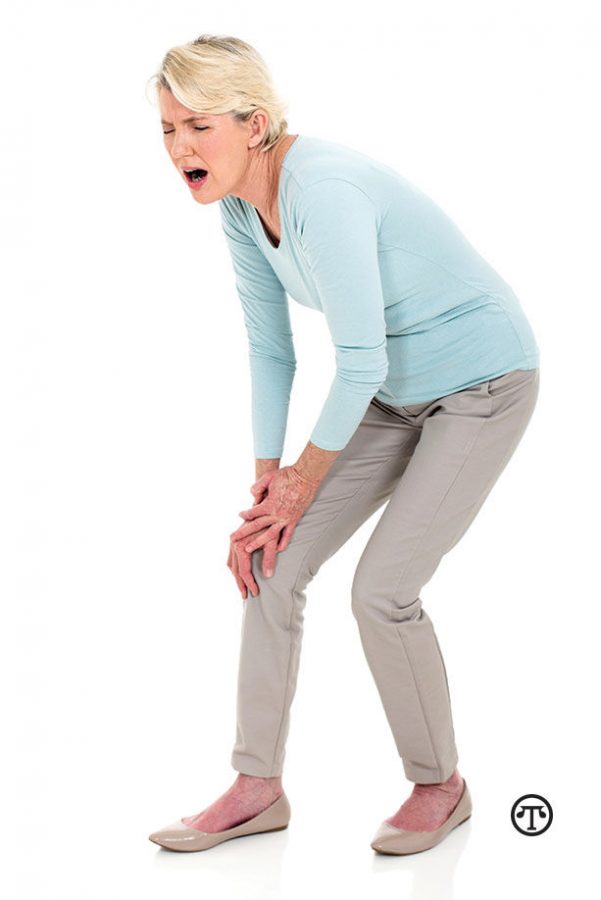Managing Moderate Pain Three Ways
You don’t have to put up with even moderate pain. Yoga, physical therapy and topical medication can help. (NAPS)
September 18, 2018
(NAPSI)—Latest research reveals that up to 90 percent of pain sufferers don’t get the relief they’re looking for with their current pain medication—but you don’t have to be among them. While everyone experiences pain differently, managing it may be simpler than many people realize.
Understanding Pain Assessment
First, it helps to know what sort of pain you have. According to Dr. Bob Arnot, an award-winning journalist, author of 12 books on nutrition and health, and previously Chief Medical Correspondent for NBC and CBS News, “Pain assessment for patients with muscle pain and arthritis is often done by using pain scales that allow the patient to describe the level of their pain. Once the level of pain is determined, an appropriate treatment or analgesic can be identified—including OTC topical medication.
“When determining the level of pain, it is important to provide answers to your doctor, including: What were you doing when the pain started? What caused it? What makes the pain better or worse? What does the pain feel like—dull, sharp, stabbing, burning? Where is the pain located? Does it radiate? Does the pain interfere with activities? Does the pain force you to lie or sit down? How long does the pain last? How often does it occur? Are you ever awakened by it?
“Doctors will seek to measure the severity of pain on a scale of zero to 10, with zero being no pain and 10 being unimaginable, unspeakable pain. There are several pain scales being used today, ranging from numerical and graphics. The scales follow the same order for explaining the intensity of pain: mild, moderate and severe.”
Minor pain levels generally do not interfere with most day-to-day activities. People with mild pain are able to adapt to pain with medication or devices such as cushions. Moderate pain, on the other hand, interferes with many activities and often requires lifestyle changes, as the person is unable to adapt to the pain. Examples range from an average toothache to a sprained ankle to bad back pain.
How To Treat Moderate Pain
Fortunately, there are several ways to manage moderate pain that don’t involve reaching for a pill. Three of the most effective are:
Physical therapy: Physical therapy can be an effective way to alleviate all types of musculoskeletal and neuropathic types of pain. A primary goal of physical therapy is to help chronic pain patients become stronger. In addition, physical therapy can teach people how to move safely and functionally in ways that they haven’t been able to in some time—helping them to avoid injury or reinjury.
Yoga: Recent studies reported by the National Institutes of Health suggest that a carefully adapted set of yoga postures may help reduce pain and improve the ability to walk and move. Yoga typically combines physical postures, breathing techniques, and meditation or relaxation.
Adds the Western Australia Department of Health, “Yoga is very helpful in treating some of the mechanical aspects of pain; for example, when there are tight muscles which contribute to pain.”
In the Annals of Internal Medicine, Dr. Robert Saper wrote, “Both yoga and physical therapy are excellent nondrug approaches for low back pain.”
Topical analgesics: For many people, however, the first choice should be a topical solution: the Salonpas® Pain Relief Patch LARGE. The Salonpas Pain Relief Patch LARGE is the only OTC pain reliever (oral or topical) labeled to relieve mild to tougher, moderate pain associated with arthritis, sprains, strains and backache. It is labeled to relieve mild to moderate pain for up to 12 hours, and was FDA approved just like prescription medicines.
Advises physical therapist Dave Endres, “The new Salonpas Pain Relief Patch LARGE contains two powerful pain-relieving ingredients, menthol and methyl salicylate, which go right to the site of pain. In my business, keeping pain at bay for as long as possible is a key imperative. If there is a choice between oral or topical pain therapies, we encourage the topical route. We encourage the topical route as it avoids the adverse effects that have been observed with oral dosage forms.”
In fact, according to a recent Danish study of pain relief, “it is time to acknowledge the potential health risk of [oral] diclofenac and to reduce its use. Diclofenac should not be available over the counter, and when prescribed, should be accompanied by an appropriate front package warning about its potential risks…In conclusion, our data support that initiation of diclofenac poses a cardiovascular health risk, both compared with no use, paracetamol use, and use of other traditional NSAIDs.”
Fortunately, the patch is now double the size with the power to target large pain areas.
Learn More
For further facts and tips, visit www.salonpas.us.
![]() “Says physical therapist Dave Endres: “The Salonpas Pain Relief Patch LARGE features two powerful pain-relieving ingredients, which go right to the site of pain.” http://bit.ly/2xxGZvQ“
“Says physical therapist Dave Endres: “The Salonpas Pain Relief Patch LARGE features two powerful pain-relieving ingredients, which go right to the site of pain.” http://bit.ly/2xxGZvQ“
On the Net:North American Precis Syndicate, Inc.(NAPSI)







